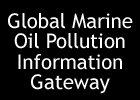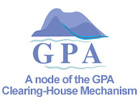|
|
|

In
a forthcoming report by the Joint Group of Experts on the Scientific
Aspects of Marine Environmental Protection (GESAMP),
estimates will be made on oil entering the marine environment
from sea-based activities. The GESAMP Working Group has co-operated
with the U.S. National Academy of Sciences, which published
its report in 2002 on oil discharges at sea and into the sea
from North America. The
GESAMP report will deal with the following sources of oil inputs
into the sea:
|
OIL
FROM OTHER SOURCES
|
| Coastal
refineries, oil storage facilities, marine terminals (Land-based
sources) |
•
Operational
discharges from refineries
• Accidental releases from coastal facilities |
| Reception
facilities (Land-based
sources) |
| Oil
in waste materials dumped at sea |
| Fuel
dumps from aircraft |
| Outboard
engines (motors) |
•
Leisure
craft |
| Natural
oil seeps
(Natural
sources) |
| Rocket
launches |
| Tar
distribution |
| Accidental
discharges from unknown point sources |
|
- GESAMP:
Joint
Group of Experts on the Scientific Aspects of Marine Environmental
Protection (GESAMP) is a multidisciplinary body of independent
experts nominated by the Sponsoring Organizations (IMO,
FAO, UNESCO-IOC, WMO, WHO, IAEA, UN, UNEP). Its mission
is to provide advice to the Sponsoring Organizations, at
their request, on pollution and other problems that face
marine and coastal environments.
- U.S.
National Academy of Sciences: Oil
in the sea III: Inputs, fates and effects.
. Report 2002 by the National Research Council (NRC) Committee
on Oil in the Sea: Inputs, Fates, and Effects. See also
U.S. National Academies press
release about the conclusions in the NRC Report. See
also U.S. National Academies Web
Extra on Oil (including summary of sources of oil).
See also references to the figures published in the
1985 NRC report: on the Ocean
Planet Exhibition web site, and on the web page Oil
in the sea: About offshore oil and gas. (U.S.) National
Ocean Industries Association.
- APPEA:
Discovery:
Explore the world of oil and gas: Oceans and oil spills.
Australian Petroleum Production and Exploration Association
(APPEA).
- IPIECA
and OGP: Industry
as a partner for sustainable development: Oil and gas report.
A status report prepared by the oil and gas industry as
input to the 2002 World Summit in Johannesburg (WSSD); the
first such global review of this sector. Produced jointly
by International Petroleum Industry Environmental Conservation
Association (IPIECA) and OGP.
- GESAMP:
"Impact of oil and related chemicals and wastes on
the marine environment". GESAMP Report 50, 1993. Not
available online, but the figures referred to can also be
found in the online article "Oil
pollution of the sea".
- UN
Atlas of the Ocean: The impact of marine pollution. Report
(1980) by Douglas J. Cuisine and John P. Grant. Table published
on the UN
Atlas of the Oceans web site.
|

|
|


